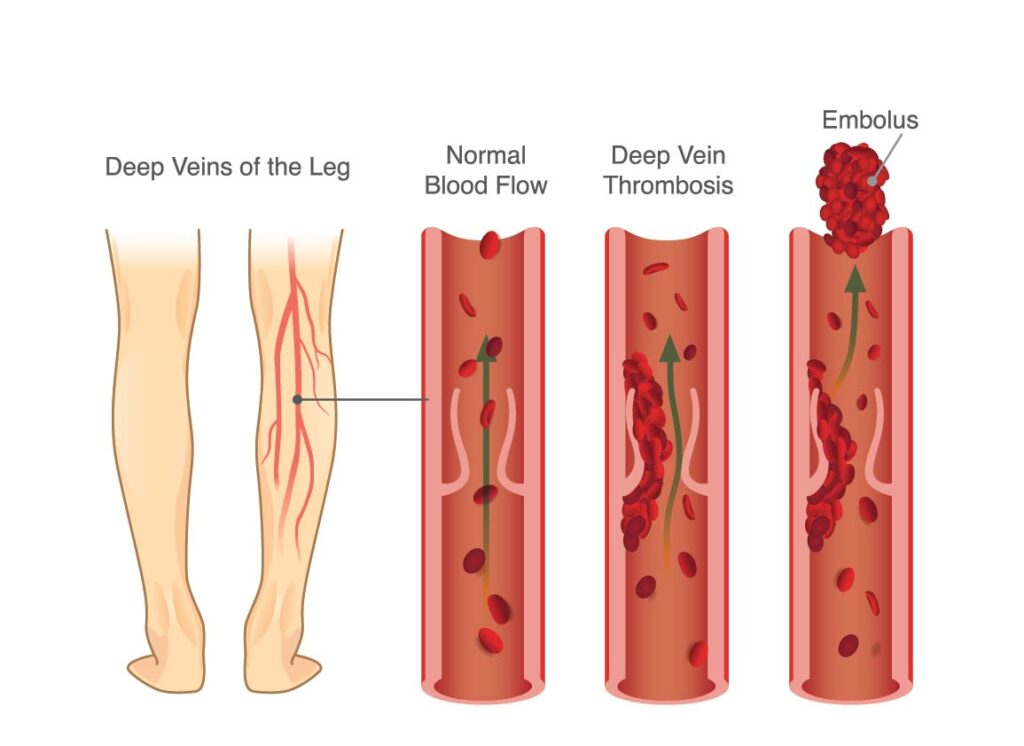MY VASCULAR HEALTH
Deep Vein Thrombosis

Overview
The veins are the blood vessels that return oxygen-poor blood back to the heart. The deep veins lie beneath and within groups of muscles. They lead to the body’s largest vein, the vena cava, which then goes to the heart.
A Deep Vein Thrombosis, also called DVT, is a blood clot in one of the deep veins. It usually occurs in the pelvis region, thigh, or calf. A DVT can also occur in the chest or arms but is less common.
Signs & Symptoms:
- Leg swelling, ache, and/or pain to palpation.
- The symptoms can sometimes be subtle and undetected. If the blood clot breaks and travels to the lungs, the condition is referred to as a pulmonary embolus, and patients experience symptoms of sudden onset of chest pain and shortness of breath. This could be life-threatening.
Causes:
The three main causes for developing DVT include:
- Venous stasis (which can occur in patients with a sedentary lifestyle or in patients with anatomical narrowing in pelvic veins which slows down blood exiting the legs).
- Traumatic injury to the veins.
- An underlying hypercoagulable disorder during which the clotting factors in our blood are ‘turned on’ to a higher degree.

